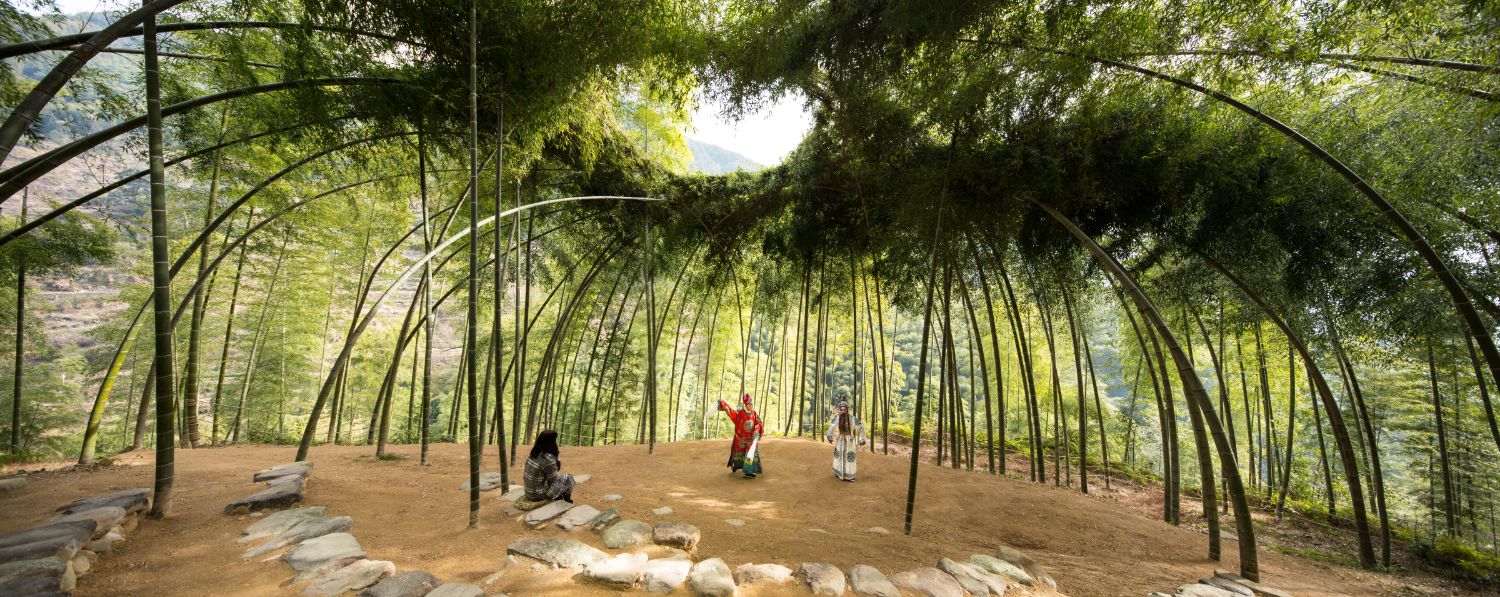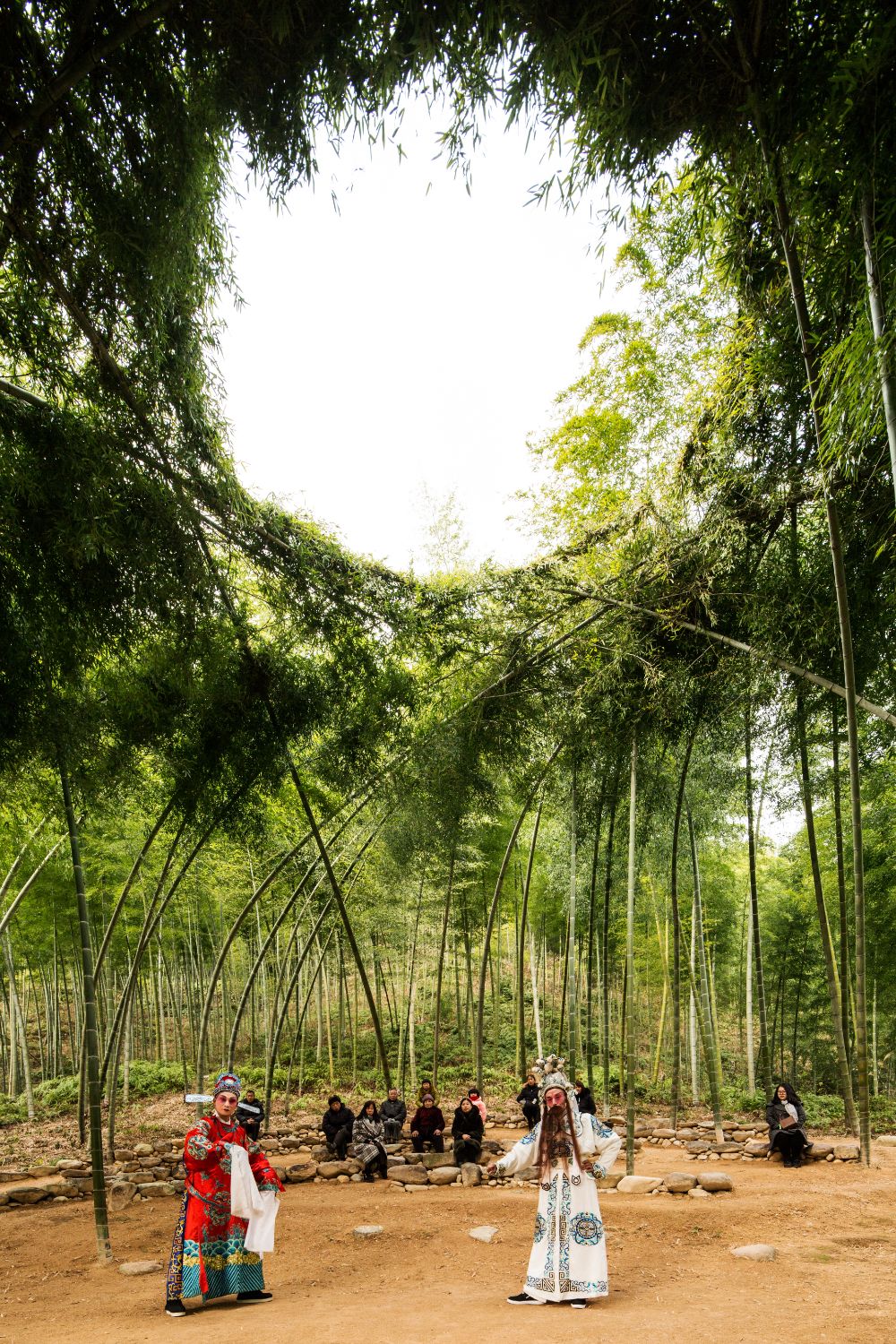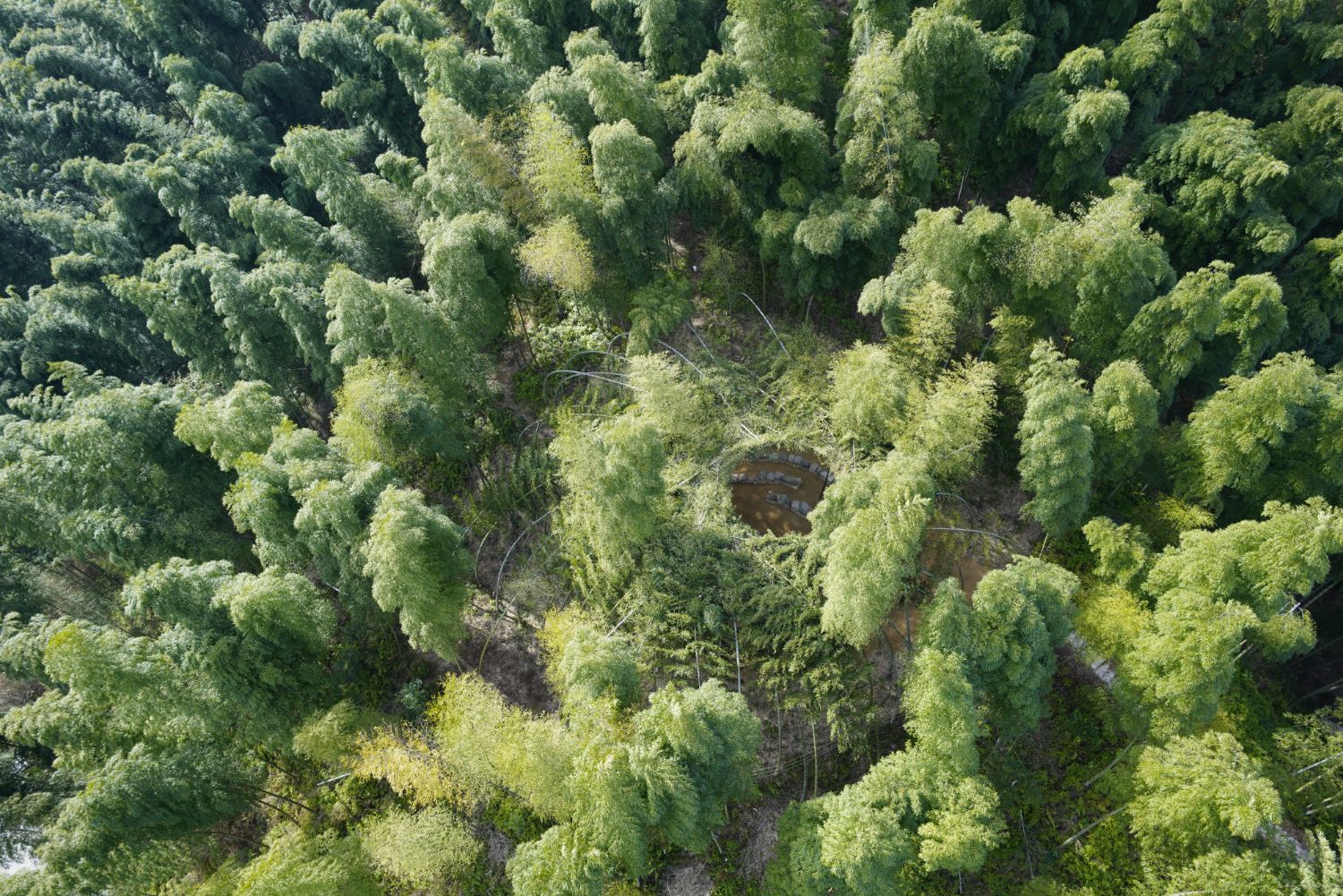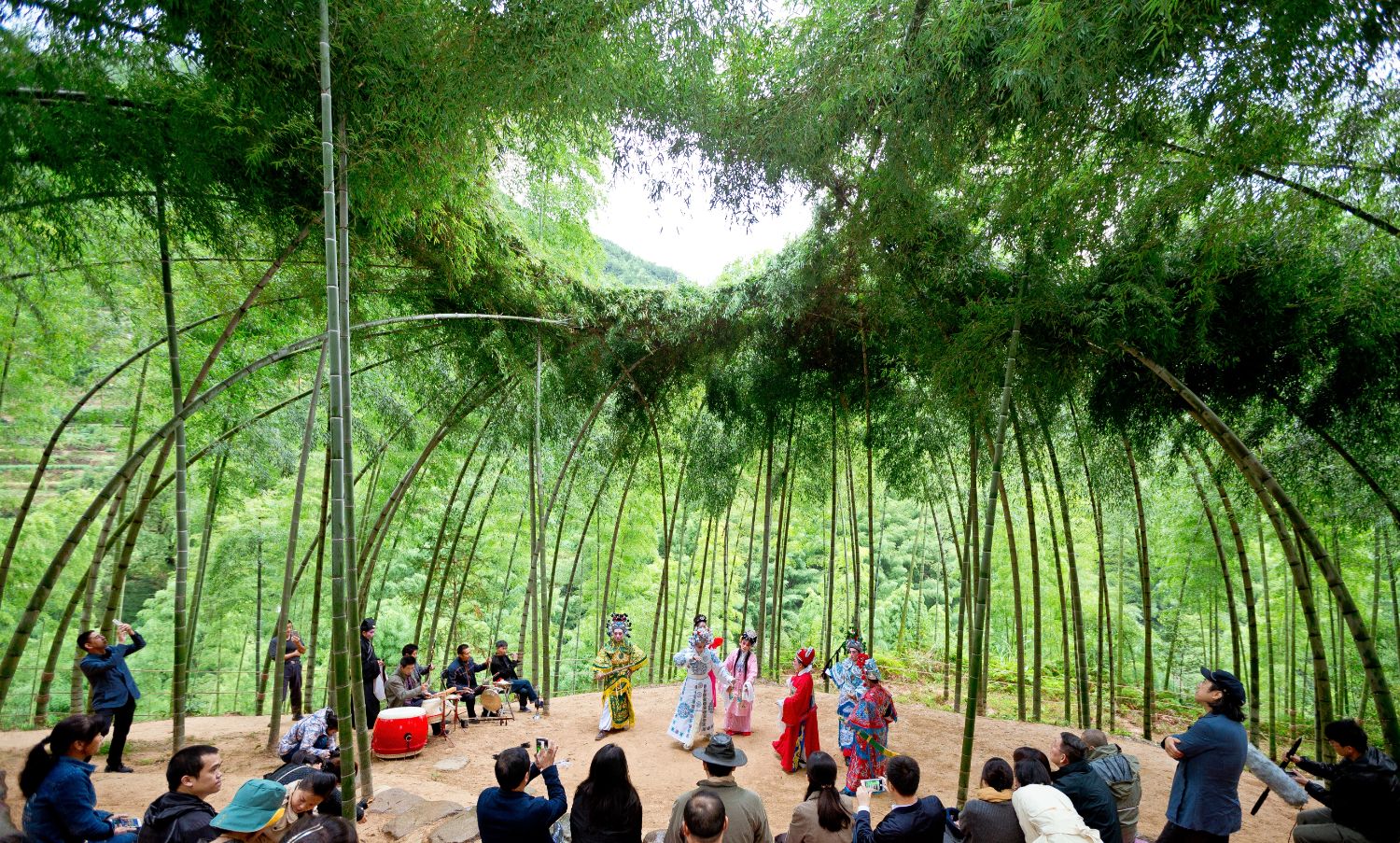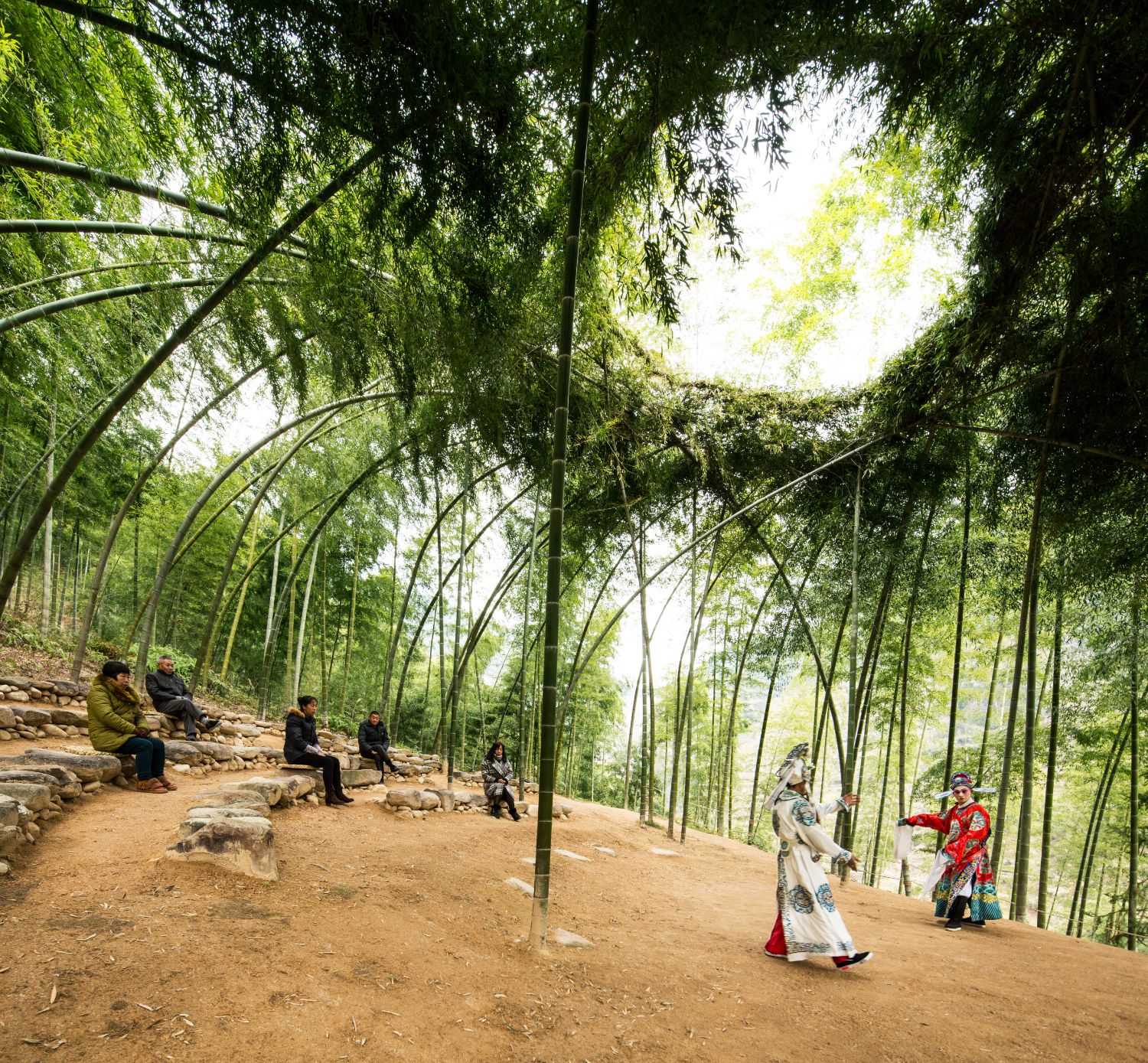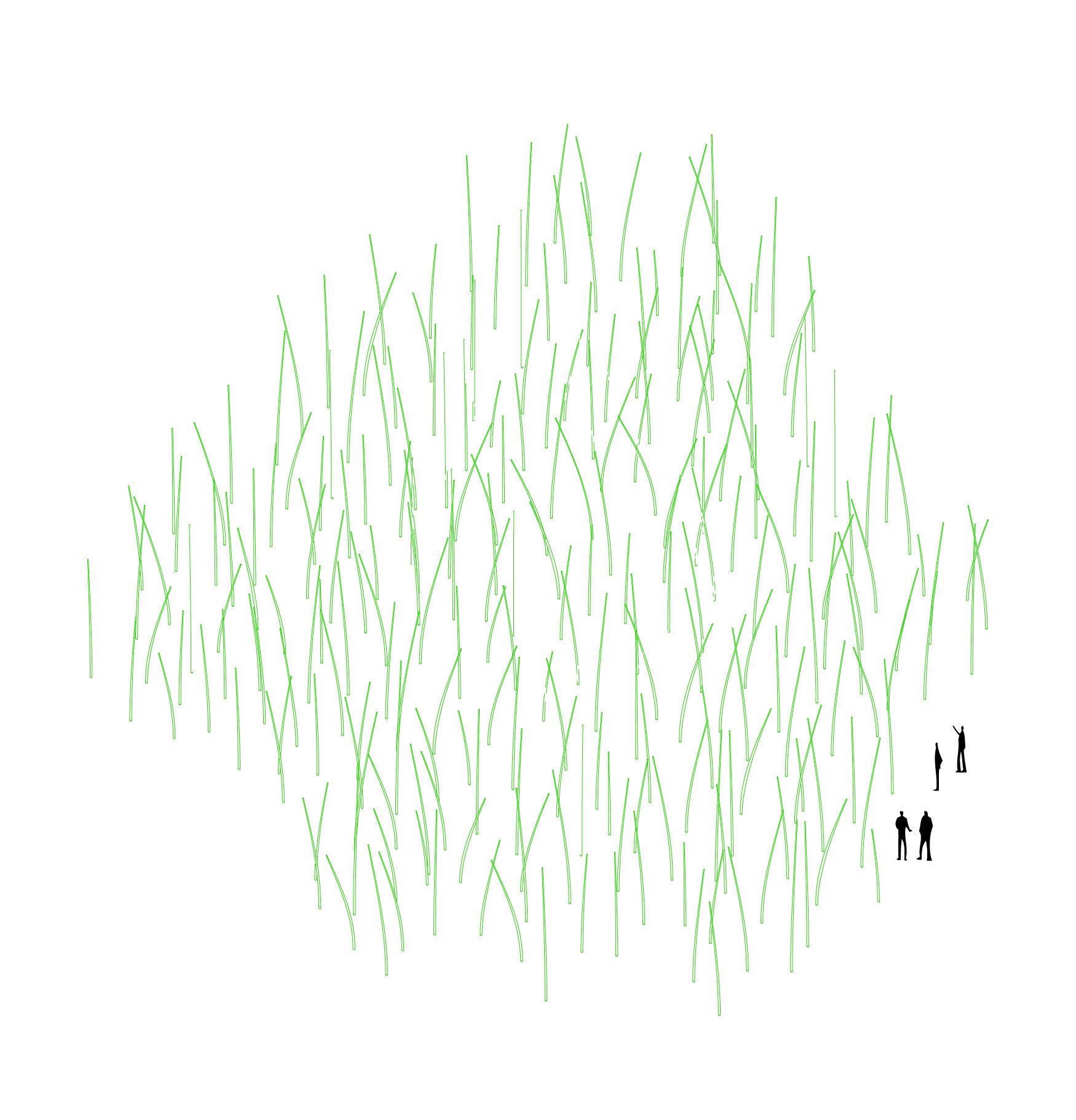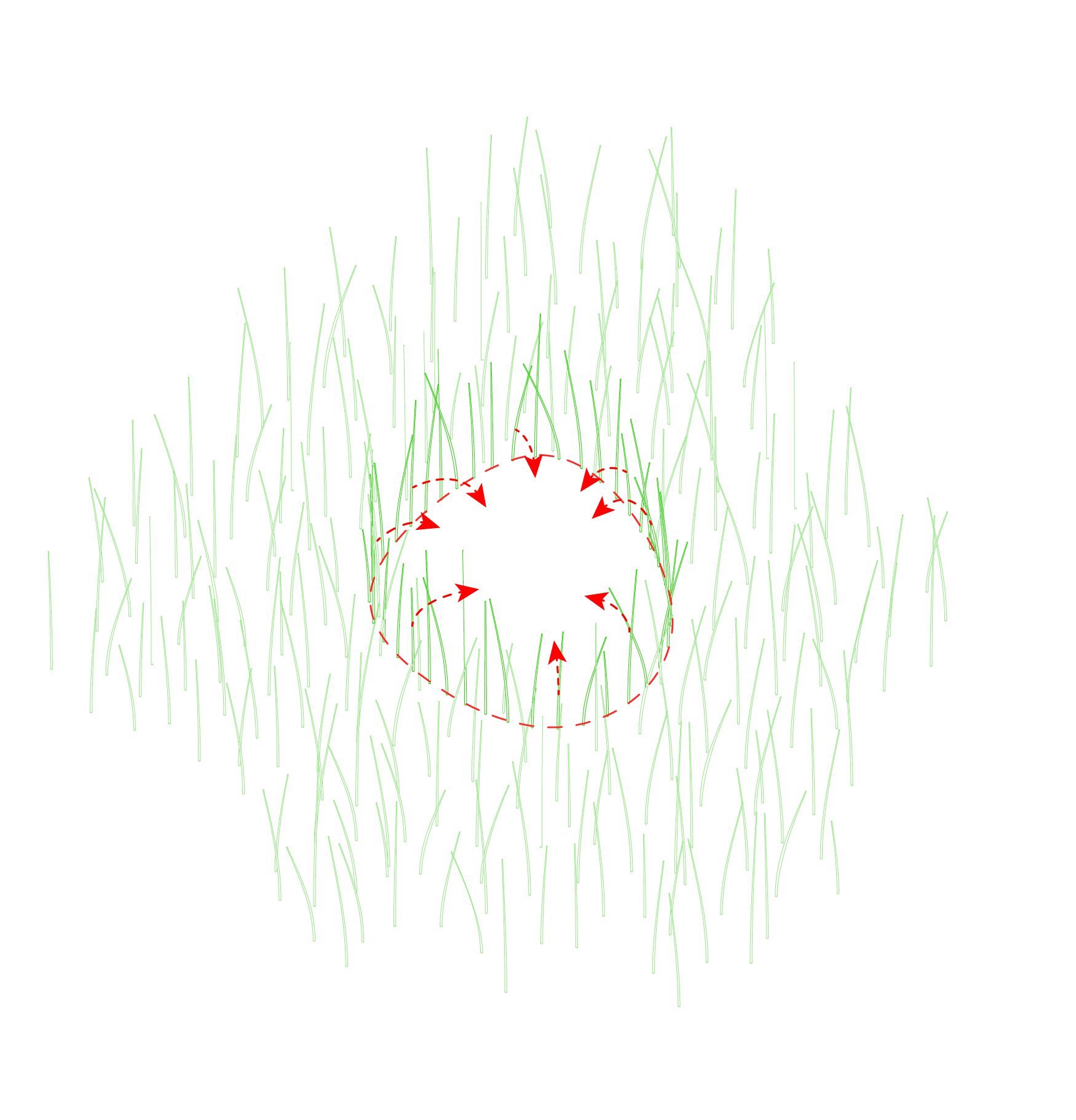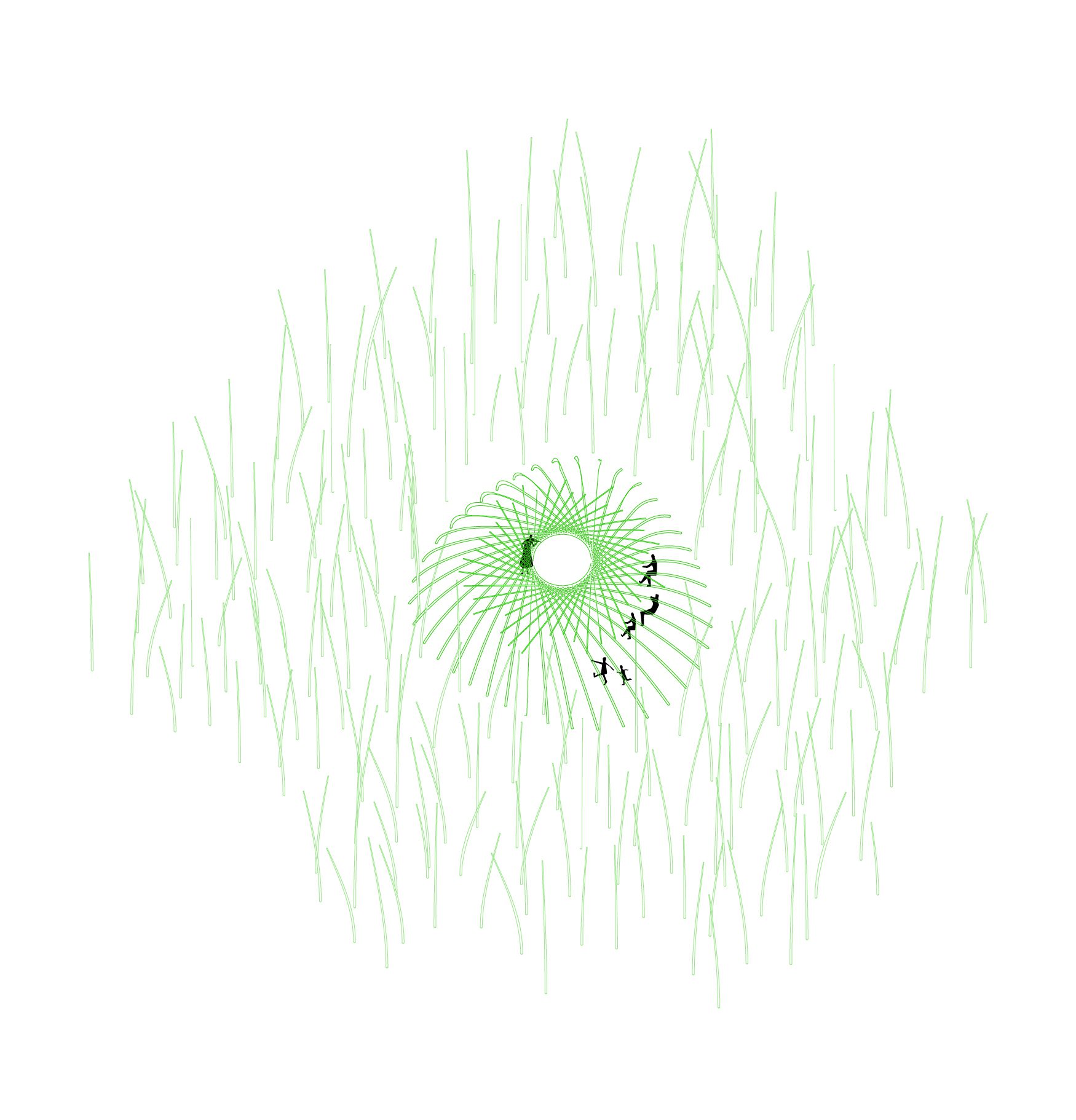Bamboo Theatre/
DnA_Design and Architecture
Project Details

Location(City/Country):
Hengkeng Village, Zhejiang Province / China
Tipology:
Cultural
Year (Design/Construction):
2015 / 2015
Area (Net/Gross):
- / -
Operational Carbon emissions (B6) kgCO2e/m2/y:
-
Embodied Carbon emissions (A1-A3) kgCO2e/m2:
-- The project uses bamboo, a local and renewable material, as the main element in the construction.
- It creates a design with low impact on the landscape.
Project description as provided by the Architects:
Bamboo is a quickly growing grass that is found in every garden in China and as spare woodland in many hilly regions. The importance of bamboo in Chinese culture arises from a range of qualities such as its flexible structure, the sparkling green lighting effect that a bamboo grove engenders, its many varieties, and its technical properties as a material. For the village of Hengkeng, Xu Tiantian designed a theatre stage that is inspired by a historical account.
For the construction of the bamboo dome, the architect used a low-tech approach that takes the rapid growth and bendable quality of the material into account. Once installed, the growing dome requires little regular maintenance: younger bamboo sprouts are woven into the existing dome and old poles are removed. This bio-organic architecture in natural surroundings facilitates activities ranging from village opera performances to individual meditation in nature.
Almost every village in SongYang has a surrounding bamboo forest, which not only provides a scenic view but also allows possible leisure places inside the forest. The type of bamboo grows in the mountain is called Mao Zhu. Mao Zhu is tough under tension, and has roots that spread out horizontally while connecting to others like the foundation of a building. Therefore, this type of bamboo can still grow when bended. Through instructions, villagers can bend the bamboo in a pattern, and weave them to form a vault, which creates a space of leisure for the villagers to stay in while continuing to grow sustainably. Each year, old bamboo can be removed, and new bamboo can easily join the existing structure, making it a metabolic architecture. This light landscape structure provides a casual leisure space as well as a stage in the nature for local traditional opera performances.
Principle Architect: Xu Tiantian
Design Team: Xu Tiantian, Zhang Longxiao, Zhou Yang
Photographer: Wang Ziling, Han Dan, Jiang Xiaodong
